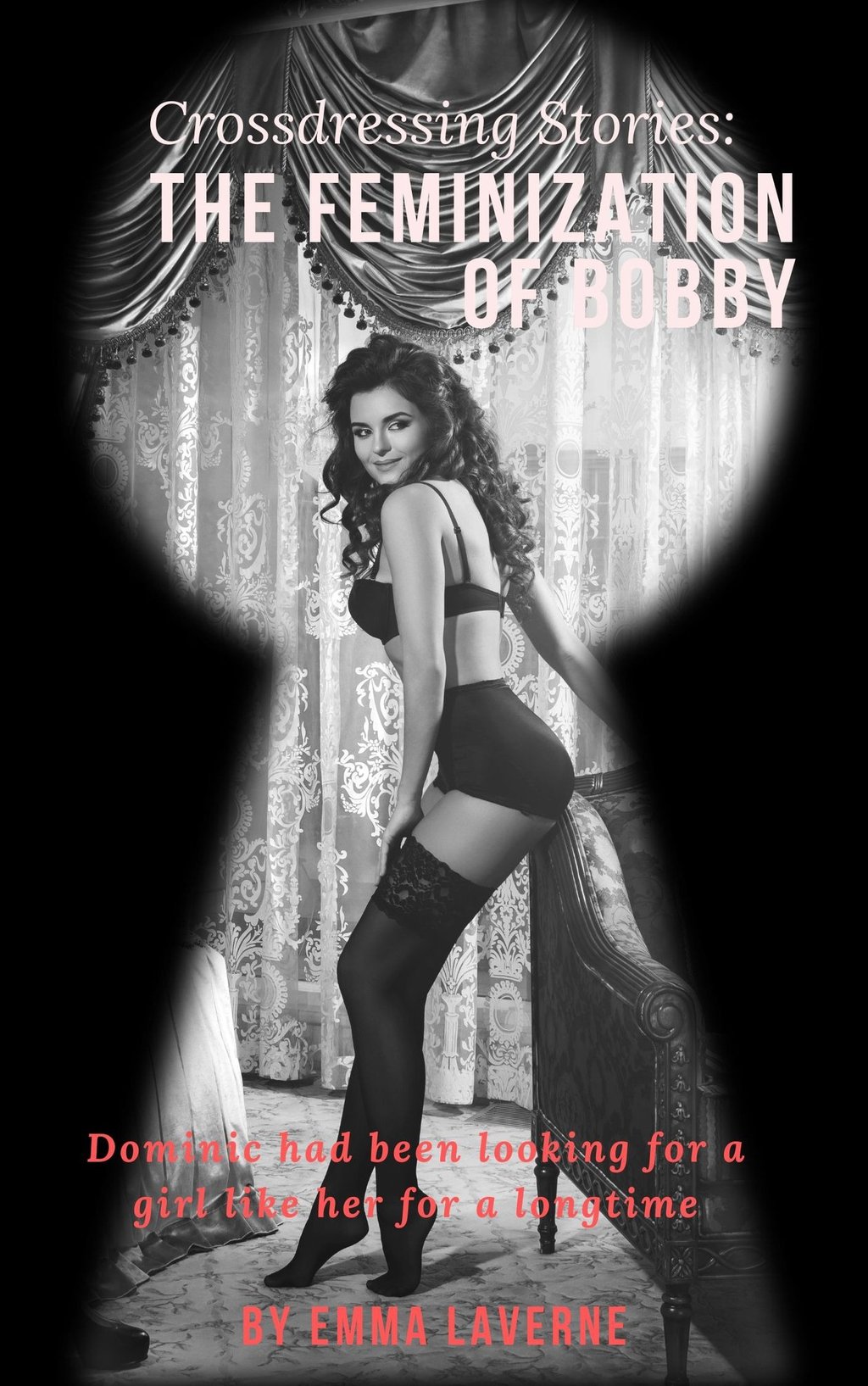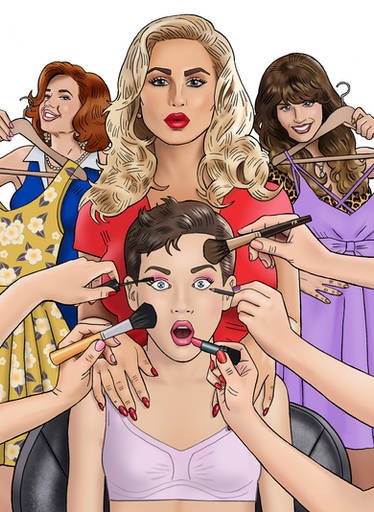Forced Feminization: Fantasy, Fetish, or Journey of Self-Discovery?
Explore the complex world of forced feminization, examining its role as a fantasy, fetish, and potential path to self-discovery and discover how this niche practice intersects with gender identity and power dynamics in surprising ways.
FORCED FEMINIZATION
Emma LaVerne
9/16/202414 min read
Forced feminization refers to a niche activity, often within the context of BDSM and fetish communities, where an individual, typically male, is "forced" into adopting traditionally feminine behaviours, attire, and roles.
This dynamic can range from wearing women's clothing to more complex scenarios involving submission and power play. While the word "forced" suggests compulsion, in most cases, the activity is consensual and part of an erotic or psychological fantasy where one party plays the role of the dominant and the other the submissive, who is made to embrace a form of femininity.
For some, this can be purely a sexual fantasy, but for others, it may serve as a deeper exploration of their gender identity.
In recent years, forced feminization has gained increasing attention, particularly in online spaces such as forums, blogs, and digital communities. The rise of niche subcultures in internet communities has allowed individuals to express and explore such fantasies more openly, creating a network of shared experiences and support.
Additionally, the phenomenon has become more visible as discussions around gender fluidity, identity, and the dismantling of rigid gender roles have gained traction. Forced feminization, which challenges traditional ideas of masculinity and femininity, has thus become a talking point, not just for those within the BDSM world but also for people exploring their own gender expression and identity.
The Origins of Forced Feminization
Forced feminization has its roots within fetish and BDSM cultures, where power exchange and role reversal play central roles in fantasy and sexual exploration. Historically, forced feminization began gaining attention as part of broader fetish practices like cross-dressing, domination, and submission, particularly in underground kink communities during the mid-20th century.
In these spaces, men would adopt female attire or personas, often as part of scenarios in which they were "forced" into subservient roles, enhancing the erotic tension between domination and submission. This practice evolved in part from earlier cross-dressing traditions, which had long existed in theatre and secret societies but took on a more fetishist edge in BDSM circles.
With the rise of specialized magazines and the growing visibility of BDSM culture, the idea of forced feminization began to crystallize as a niche practice, separate from general cross-dressing or drag.
During the late 20th century, particularly with the advent of the internet, these fantasies could be more freely shared, leading to a proliferation of forced feminization content in stories, art, and roleplay communities.
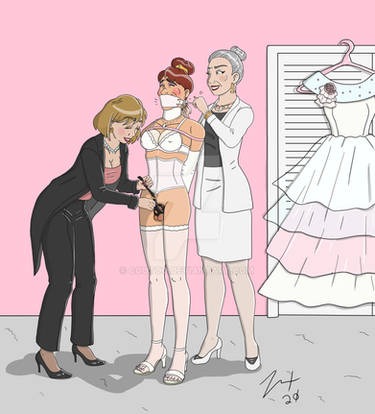

Early references to what we now recognize as forced feminization can be found in literature and art, particularly in underground queer fiction and fetish literature. The concept of sissification—a form of forced feminization where men are made to adopt hyper-feminine, often exaggerated forms of femininity—appeared in the erotic writings of the mid-1900s. These depictions often portrayed the feminized male as submissive, exploring gender inversion as both a form of humiliation and desire.
In broader cultural contexts, cross-dressing and gender fluidity have appeared throughout history, but they were often hidden beneath layers of taboo. In the world of performance, for example, men dressing as women for theatrical roles is a tradition that stretches back to ancient civilizations, from Greek and Roman theatre to Shakespearean plays.
However, in the case of forced feminization, it was less about performance and more about power dynamics and the transgression of gender norms. This inversion of expected gender roles in forced feminization plays on deep-seated cultural associations between masculinity, power, and control versus femininity, which is often linked with submission and passivity.
The concept of forced feminization relies heavily on traditional gender roles and the power structures embedded within them. Historically, masculinity has been associated with strength, dominance, and control, while femininity is often tied to notions of weakness, submission, and domesticity.
Forced feminization exploits these stereotypes, turning them into a form of erotic play where men, the traditionally dominant gender, are "forced" into the submissive, feminized role.
This reversal of roles is often experienced as both erotic and humiliating, with the "forced" feminized individual surrendering their masculine power to embrace a form of femininity imposed upon them.
For some, this play with gender and power can be a purely fetishist exercise in dominance and submission. However, for others, it may also serve as a way to explore and challenge these rigid societal gender norms, providing a space to question their own gender identity or to express feelings of gender fluidity.
In essence, the origins of forced feminization lie not only in sexual fetishism but also in the manipulation of long-standing cultural assumptions about gender and power. By inverting these roles, forced feminization offers a means of transgressing societal norms, whether for erotic pleasure or deeper personal exploration.

Forced Feminization as Fantasy and Fetish
Forced feminization exists prominently within the realm of fetishistic desires, particularly those involving themes of humiliation, control, and submission. In fetish culture, the act of being "forced" into a feminine role can represent a symbolic stripping of power and masculinity.
This humiliation, while uncomfortable in everyday life, becomes a source of erotic pleasure in the context of fantasy and roleplay. For many, the concept of forced feminization taps into a deeper desire for surrendering control, allowing the submissive partner to explore vulnerability, often by embracing femininity as a form of weakness or softness compared to traditional male strength.
At the same time, this forced gender transformation can act as a symbolic inversion of societal gender expectations, with masculinity being associated with dominance and femininity linked to submission.
Through this role reversal, the submissive individual derives pleasure from the paradox of being both "emasculated" and erotically empowered. Forced feminization, then, becomes a fetishized fantasy where gender norms are not only bent but exploited for emotional and sexual gratification. For many participants, it is less about gender identity itself and more about the sensations and power dynamics associated with being "reduced" to a traditionally subordinate role.
The psychological appeal of forced feminization lies in its ability to blend power exchange, eroticism, and gender play into one immersive experience. In terms of power exchange, forced feminization allows the dominant partner to control not just the submissive’s actions but also their identity—dictating how they dress, act, and often perceive themselves.
This complete surrender of autonomy can be exhilarating for those who thrive on the psychological intensity of submission, amplifying feelings of vulnerability, shame, and erotic excitement.
For the submissive, the erotic charge may stem from being placed into a role traditionally associated with weakness, femininity, or even inferiority—while also deriving intense pleasure from that very transformation.
The idea of forced feminization taps into gender role deconstruction, offering participants the thrill of challenging or temporarily breaking free from societal expectations of what it means to be male or female. It is often less about wanting to become female in any permanent sense, but more about the heightened erotic experience of being "forced" to inhabit a role that is unfamiliar or forbidden.
Additionally, gender play in forced feminization offers the opportunity to experiment with alternative expressions of gender without necessarily committing to a permanent change. It creates a space where one can temporarily escape the rigidity of their assigned gender roles, navigating fantasies that incorporate elements of femininity and masculinity in ways that might not be socially acceptable in everyday life.
In the BDSM and fetish communities, consent is paramount, and this is particularly true for fantasies surrounding forced feminization. Although the term "forced" implies coercion, the reality within these communities is that all acts of forced feminization are consensual and often heavily negotiated in advance. Participants agree upon their limits, boundaries, and the specific nature of the roleplay before any actual fantasy play begins.
In fact, many individuals find comfort in the controlled environment of BDSM roleplay, where they can explore forced feminization with the understanding that the experience is safe, consensual, and mutually enjoyable. This structure allows both the dominant and submissive partners to engage in a fantasy where one party “forces” the other into femininity while respecting pre-negotiated agreements on how far the fantasy will go.
Consent plays a significant role in how these fantasies are experienced. For the submissive, being "forced" within a consensual scenario enhances the feeling of submission, knowing they are relinquishing control while trusting that their dominant partner will respect their boundaries. For the dominant, the consented power exchange provides the freedom to explore the control dynamic without overstepping ethical boundaries

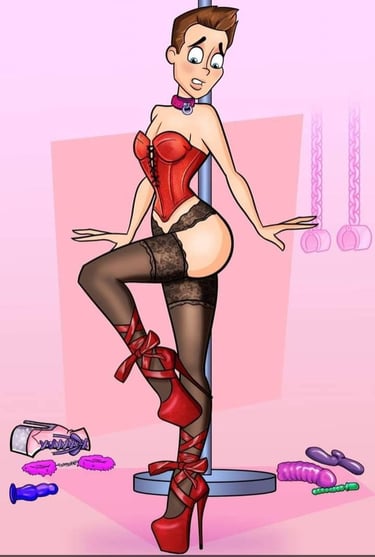
Forced Feminization Stories: A Literary Perspective
Forced feminization fiction has grown into a popular niche within the broader genres of erotic literature and BDSM-themed stories. These tales often explore the complex interplay of power dynamics, submission, and gender identity. For many, reading forced feminization fiction serves as an accessible and low-risk way to delve into their own fantasies or curiosities about gender roles and control.
Through erotica and fiction, individuals can immerse themselves in narratives where they experience forced transformation into a feminine identity, fulfilling a desire to explore the psychological or sexual aspects of being "made" feminine.
This genre has gained significant traction, particularly with the rise of self-publishing and online content platforms. Sites dedicated to erotica, as well as broader platforms like Amazon's e-book store, have enabled writers to share forced feminization stories, allowing readers to access a vast library of content that resonates with their personal fantasies and experiences. As more individuals connect with this genre, it has become a central way to explore forced feminization themes without directly engaging in real-world scenarios.
Forced feminization stories frequently revolve around a set of common themes, with submission and humiliation being the most prevalent. These stories often depict scenarios in which a male protagonist is coerced, either through blackmail, magic, or manipulation, into adopting hyper-feminine roles.
The focus on humiliation emerges from the inversion of traditional gender roles, with the male character stripped of his masculinity and forced to embrace a femininity that is often portrayed as degrading. This dynamic highlights the fetishist aspects of control and domination, where the protagonist is simultaneously humiliated and aroused by the process of feminization.
Another significant theme is the gender identity crisis and transformation. Many forced feminization narratives delve into the psychological turmoil of the protagonist as they grapple with their new gender expression. Initially resistant, they may find themselves gradually accepting, and even enjoying, their transformation into a feminized state.
Some stories explore the tension between societal gender norms and individual desires, leading characters to question their identity. This exploration can extend into themes of gender fluidity, as the forced feminization experience becomes a vehicle for characters to re-examine their own relationship with masculinity and femininity.
The transformation trope often takes a physical form as well, with characters experiencing changes in appearance, clothing, and behaviour. Whether through fantasy elements like magical transformation or more realistic scenarios involving makeup and clothing, the physical metamorphosis into a feminine identity is central to these narratives.
The rise of online communities has been a key factor in the popularity and normalization of forced feminization fiction. Blogs, forums, and platforms dedicated to erotic storytelling have provided a space where people can share and discuss their experiences and fantasies.
These digital spaces allow readers and writers to connect, creating a sense of community around forced feminization themes. For many, this sense of community offers validation and understanding in what is otherwise a taboo or misunderstood fetish.
Websites dedicated to forced feminization stories, such as fiction blogs and erotic forums, have become repositories for hundreds of thousands of user-generated stories. These platforms allow individuals to contribute their own interpretations of the genre, ensuring that the narratives remain diverse and adaptable to different interests. Furthermore, self-publishing platforms like Amazon Kindle have allowed independent authors to publish e-books on forced feminization, reaching an even broader audience and helping to bring the topic into mainstream erotica consumption.
However, while these stories provide a space for exploration, they can also contribute to the stigmatization of forced feminization as solely a fetish or eroticized concept. Because many of the narratives focus heavily on the humiliation and degradation of femininity, they risk reinforcing harmful stereotypes about gender roles, particularly the notion that femininity is inherently submissive or weak.
For some readers, forced feminization fiction can be an empowering space to explore gender dynamics, while for others, it may perpetuate problematic views on gender and power.
In sum, forced feminization stories have become a vital part of the online erotic landscape, offering a place where people can engage with complex themes of gender, power, and transformation. These narratives serve both as a means of exploring fantasies and as a reflection of society's evolving conversations around gender identity and roles.
Forced Feminization Art: A Visual Exploration
Forced feminization has found a vibrant and growing presence in both digital and traditional art forms. In niche online communities, illustrations, comics, and digital renderings are common mediums for exploring these fantasies visually.
Platforms such as DeviantArt, Patreon, and various adult art sites have become popular spaces for creators to share their interpretations of forced feminization, often depicting male characters being transformed or coerced into adopting exaggerated feminine characteristics. These artworks range from light-hearted and playful to more explicit and erotic, with artists using their medium to bring the fantasy to life in vivid detail.
While much of the focus is on digital art, some traditional art forms, such as hand-drawn illustrations and paintings, also explore forced feminization themes. These pieces, though less common, often echo the same elements seen in digital works, portraying the process of feminization as a dramatic, and often exaggerated, transformation.
In addition to static images, forced feminization art has also emerged in comics and graphic novels, where the transformation process can be depicted more narratively. These comics often delve deeper into the emotional and psychological aspects of forced feminization, illustrating not just the physical change but also the internal conflict or erotic satisfaction of the characters involved.
For many, forced feminization art provides a visual outlet for their fantasies, offering a more immediate and immersive experience than stories alone. Through art, these fantasies can be exaggerated and stylized in ways that might be difficult to achieve in reality.
Artists often emphasize the hyper-feminization of the male subject, drawing attention to elements like elaborate makeup, excessive use of pink or lace, and extreme changes in body shape. These exaggerated features serve to heighten the fantasy, allowing viewers to indulge in an intensified version of the forced feminization experience.
In many cases, the art portrays the subject's reluctance or humiliation, which enhances the power dynamics central to forced feminization fantasies. The visual representation of submission—whether through body language, facial expressions, or the act of donning traditionally feminine attire—makes the fantasy more tangible for those who resonate with it.
By transforming the male subject into an idealized or hyper-feminine version of a woman, the artwork fulfils a deep-seated desire for gender role reversal, control, and the exploration of one's relationship with femininity.
Several recurring motifs appear frequently in forced feminization art, serving as symbols of the underlying power dynamics and gender play at the heart of these fantasies. One of the most common themes is exaggerated femininity, with the feminized subject often depicted wearing overtly feminine clothing such as maid outfits, lingerie, or elaborate dresses.
These garments are typically imbued with symbolism, representing the subject’s submission and loss of masculine identity. In some works, the clothing itself becomes a tool of control, symbolizing the power that femininity has over masculinity.
Another prominent theme is the dominance of femininity over masculinity, which is often portrayed through the feminized subject’s transformation into a more submissive, passive figure. The transformation process—whether gradual or sudden—can be symbolic of the subject’s surrender to their femininity, with exaggerated makeup, hairstyles, and body modifications further emphasizing their loss of masculine identity.
In some cases, the feminization is depicted as a complete erasure of masculinity, where the subject’s new form leaves no trace of their previous identity.
Costume and makeup are recurring symbols in forced feminization art, representing the external forces that impose femininity onto the subject. The act of applying makeup or dressing in women’s clothes is often depicted as a ritual of submission, with the subject powerless to resist the transformation.
Makeup, in particular, is a potent symbol of forced feminization, as it can be seen as a tool for constructing and enhancing femininity. The application of lipstick, blush, and eyeliner often marks the final stage of transformation, visually cementing the subject’s new identity.
In summary, forced feminization art offers a compelling and dynamic medium for exploring fantasies around gender transformation, power dynamics, and submission. Through exaggerated visual depictions of femininity and transformation, artists are able to convey the emotional and psychological aspects of forced feminization in ways that resonate deeply with their audiences. These artworks not only fulfil fantasies but also reflect broader themes of gender identity, control, and the fluidity of power structures in relationships.
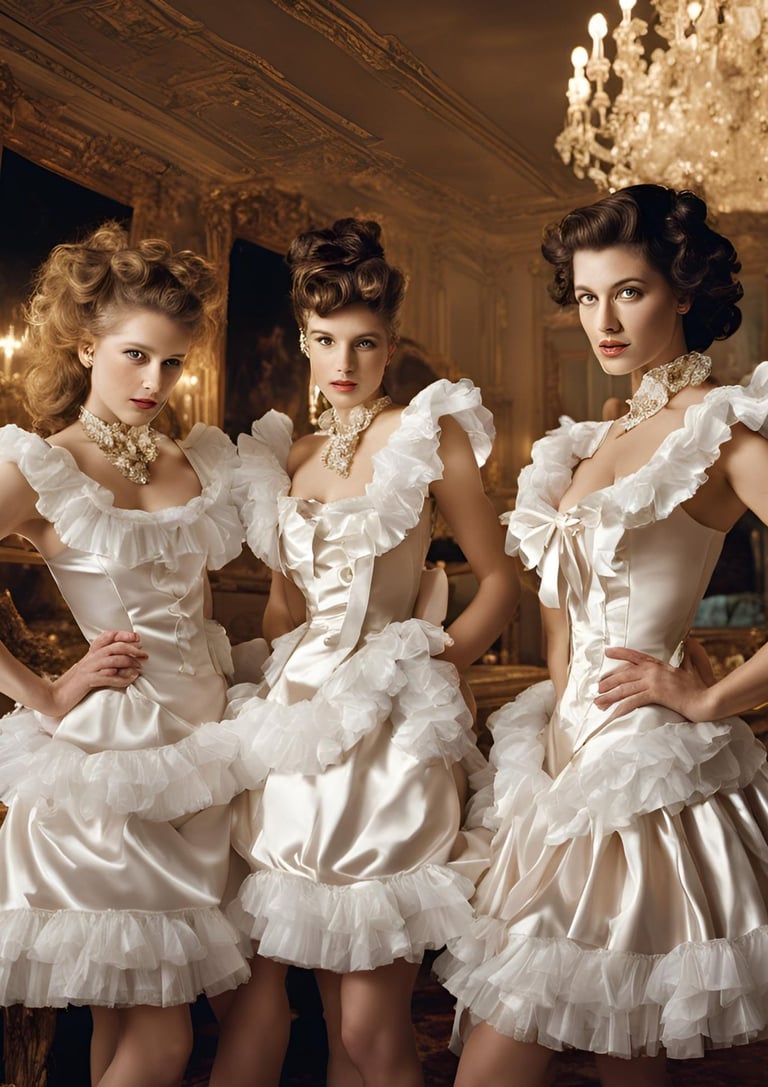

Forced Feminization as a Path to Self-Discovery
For some individuals, forced feminization serves as more than just a sexual or fetishistic fantasy—it becomes a tool for exploring their true gender identity or experimenting with femininity in a safe and controlled environment.
Within the confines of a fantasy, individuals can engage with aspects of femininity that they may not feel comfortable expressing in their everyday lives. The "forced" element provides a layer of psychological distance, allowing them to indulge these desires without directly confronting societal expectations or their own internalized fears.
Through this process, many people begin to question their relationship with gender and may discover a deeper connection to femininity than they had previously acknowledged. By immersing themselves in a scenario where they are "made" to adopt feminine traits, they can start to explore how these traits resonate with their own sense of self.
Over time, the fantasy may transition from being about external control to a more personal and voluntary embrace of femininity, providing an entry point for those questioning their gender identity or gender expression.
Forced feminization can also intersect with experiences of gender dysphoria. For individuals who already experience discomfort or dissatisfaction with their assigned gender at birth, the fantasy of being feminized may offer temporary relief by allowing them to explore a gender expression that feels more aligned with their true self. In these cases, the fantasy becomes a coping mechanism—a way to externalize their feelings of dysphoria in a structured scenario that provides both psychological and emotional release.
For some, engaging with forced feminization fantasies may lead to a deeper realization that their desires extend beyond the realm of fantasy and into real life. The experience can trigger greater self-awareness, helping individuals recognize that their attraction to femininity is not just a fleeting fantasy but rather a reflection of their authentic gender identity.
In some cases, individuals who regularly engage with forced feminization may eventually realize that they want to transition or express a more feminine identity in their day-to-day lives.
While not everyone who enjoys forced feminization experiences gender dysphoria or feels compelled to transition, for those who do, the fantasy can act as an important stepping stone toward understanding their true selves. The process of self-discovery often involves navigating complex emotions, and forced feminization can provide a structured environment where individuals can safely explore these feelings.
Personal stories from those who have found self-discovery through forced feminization highlight the transformative potential of the experience. Many individuals have shared anecdotes about how their engagement with the fantasy helped them come to terms with their gender identity.
For instance, some people describe how they initially approached forced feminization purely for erotic reasons, but over time, they found themselves drawn to the idea of living more authentically in a feminine role.
One case study might involve someone who initially engaged in forced feminization as part of BDSM roleplay but gradually realized that the feelings of comfort and satisfaction they experienced when feminized extended beyond the realm of kink. This realization prompted them to explore gender identity more seriously, eventually leading them to transition or express a different gender identity in everyday life.
Other stories involve individuals who felt a deep sense of liberation when engaging in forced feminization scenarios, as the fantasy allowed them to shed the societal expectations of masculinity. By embracing femininity in these controlled environments, they were able to unlock aspects of their personality and identity that they had long suppressed, paving the way for greater self-acceptance and understanding.
In conclusion, while forced feminization is often viewed through the lens of fetish or fantasy, for some individuals it can act as a powerful tool for self-discovery. The fantasy provides a safe space to explore gender, experiment with femininity, and confront feelings of gender dysphoria, ultimately helping people better understand their true selves. Whether it remains a fantasy or leads to real-life changes, forced feminization can play an important role in an individual’s journey of gender exploration.


